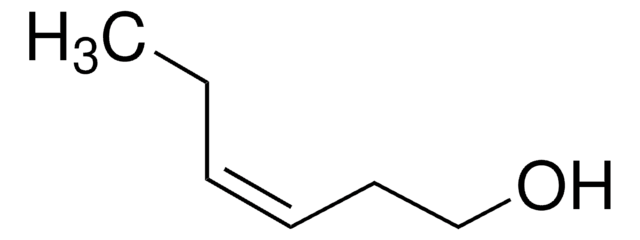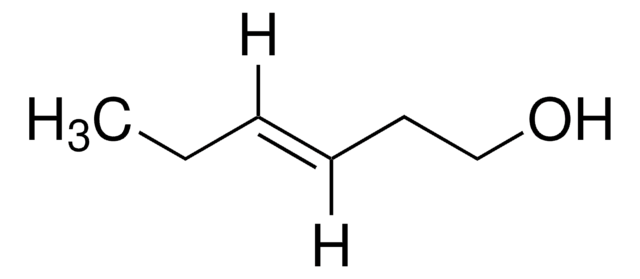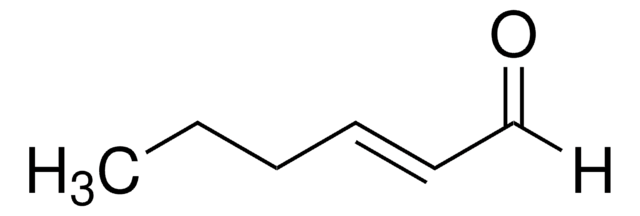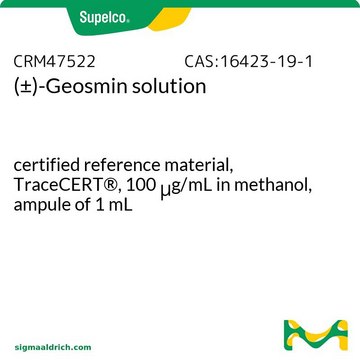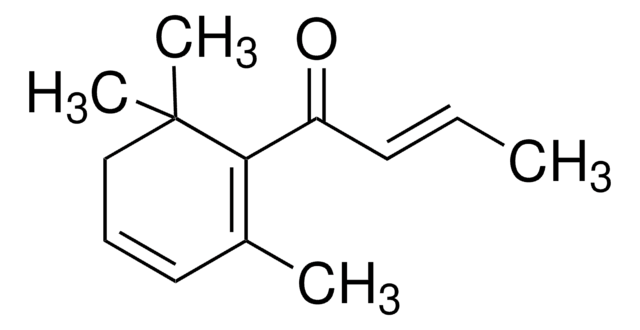Kluczowe dokumenty
H12900
cis-3-Hexen-1-ol
98%
Synonim(y):
(3Z)-3-Hexen-1-ol, (Z)-3-Hexen-1-ol, (Z)-Hex-3-en-1-ol, 3Z-Hexen-1-ol, Blaetteralkohol, cis-1-Hydroxy-3-hexene, cis-3-Hexene-1-ol, cis-3-Hexenol
About This Item
Polecane produkty
gęstość pary
3.45 (vs air)
Poziom jakości
Próba
98%
Formularz
liquid
kolor
APHA: ≤100
współczynnik refrakcji
n20/D 1.44 (lit.)
bp
156-157 °C (lit.)
gęstość
0.848 g/mL at 25 °C (lit.)
ciąg SMILES
CC\C=C/CCO
InChI
1S/C6H12O/c1-2-3-4-5-6-7/h3-4,7H,2,5-6H2,1H3/b4-3-
Klucz InChI
UFLHIIWVXFIJGU-ARJAWSKDSA-N
Szukasz podobnych produktów? Odwiedź Przewodnik dotyczący porównywania produktów
Powiązane kategorie
Hasło ostrzegawcze
Warning
Zwroty wskazujące rodzaj zagrożenia
Zwroty wskazujące środki ostrożności
Klasyfikacja zagrożeń
Flam. Liq. 3
Kod klasy składowania
3 - Flammable liquids
Klasa zagrożenia wodnego (WGK)
WGK 1
Temperatura zapłonu (°F)
111.2 °F - closed cup
Temperatura zapłonu (°C)
44 °C - closed cup
Środki ochrony indywidualnej
Eyeshields, Faceshields, Gloves, type ABEK (EN14387) respirator filter
Wybierz jedną z najnowszych wersji:
Masz już ten produkt?
Dokumenty związane z niedawno zakupionymi produktami zostały zamieszczone w Bibliotece dokumentów.
Klienci oglądali również te produkty
Nasz zespół naukowców ma doświadczenie we wszystkich obszarach badań, w tym w naukach przyrodniczych, materiałoznawstwie, syntezie chemicznej, chromatografii, analityce i wielu innych dziedzinach.
Skontaktuj się z zespołem ds. pomocy technicznej